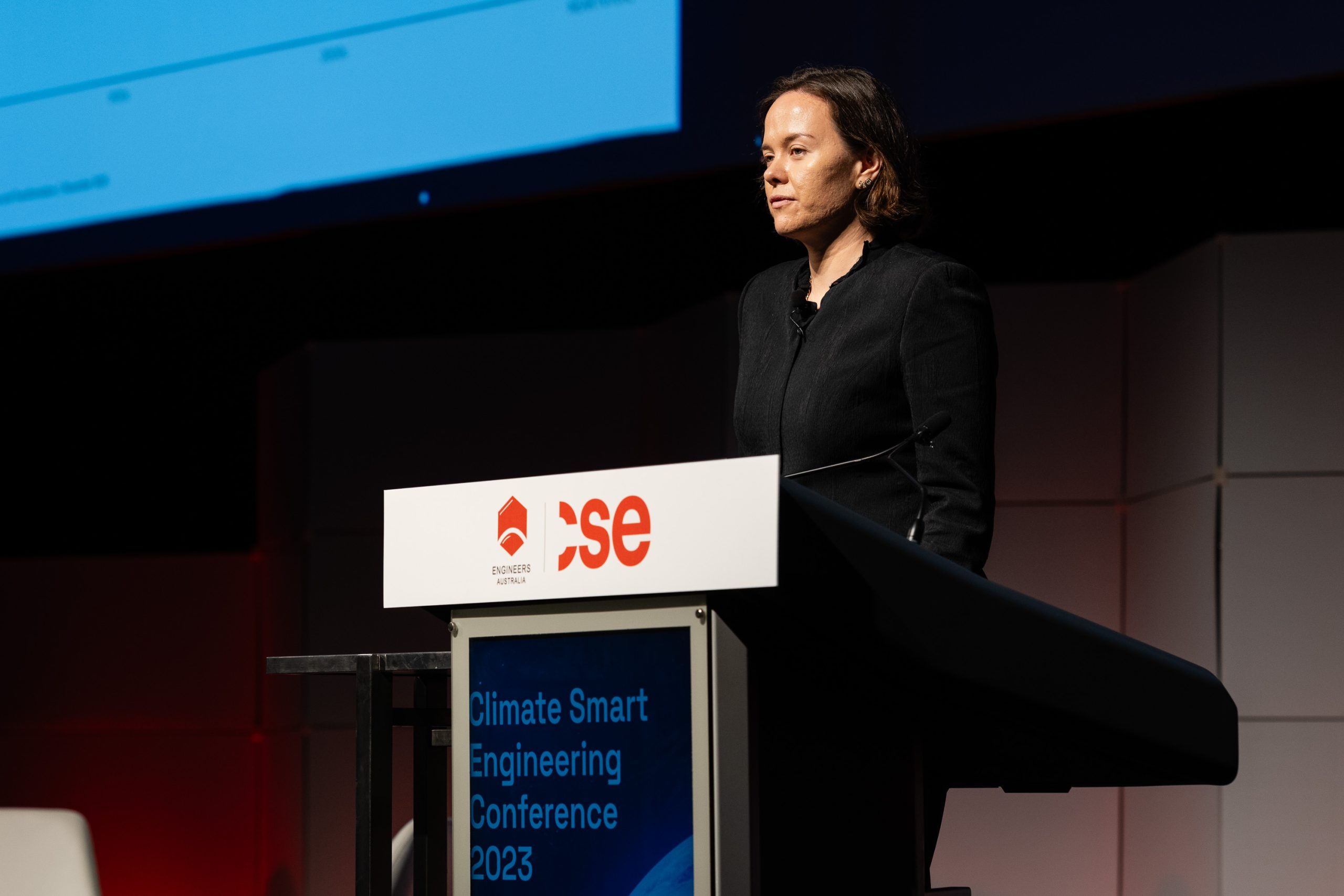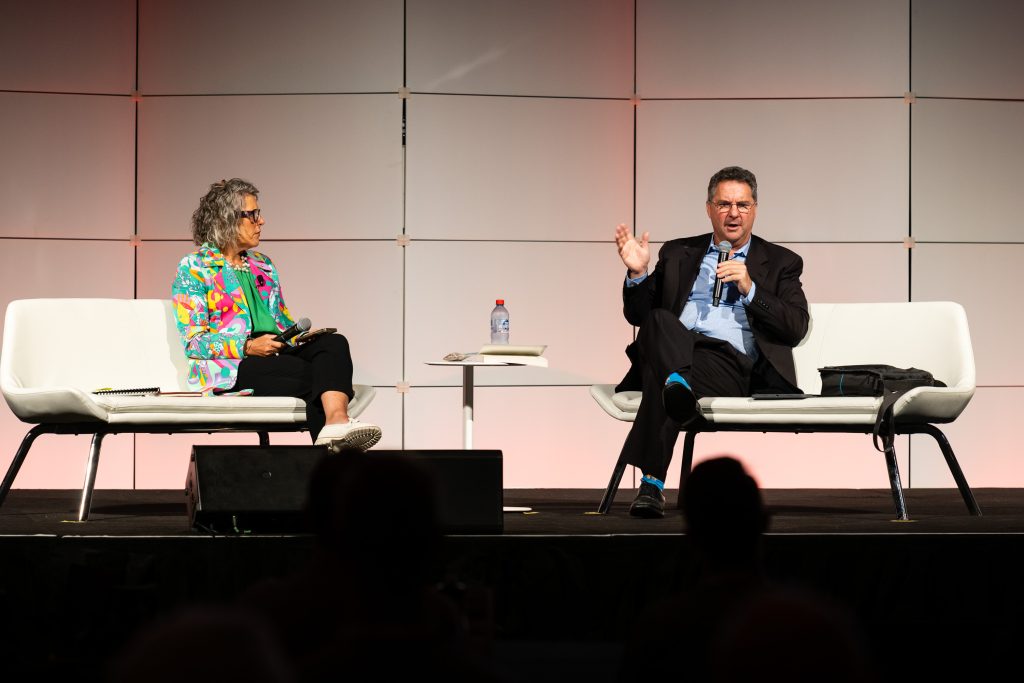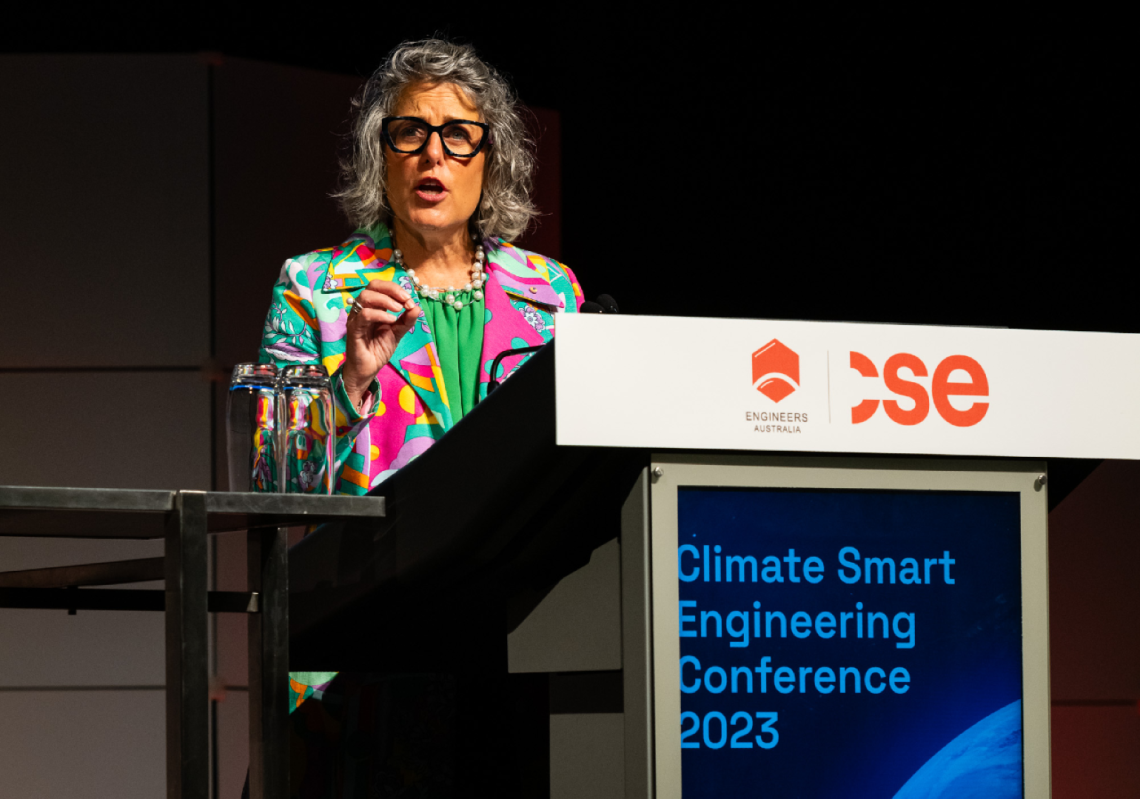By embodying courage, purpose and innovation, engineers can — and must — be the architects of change and push past invention to achieve true innovation.
This was the clear theme on day one of Engineers Australia’s Climate Smart Engineering conference (CSE23) in Melbourne, as Australia’s brightest engineering minds were asked to move past what we can do and focus on what we should do.
Under the spotlight was the natural position of engineers as problem solvers: the people charged with telling us what is and isn’t possible. But does this solution-focused mindset limit an engineer’s ability to lead the change required in an economy built on consumption?
Telling the truth
“[Engineers] are professionally … and often personally obligated to try and tell the truth about what is possible, what is not possible and where things do and don’t work.” said Zoe Whitton, Managing Director and Head of Impact at Pollination, a climate change investment and advisory firm.
So the challenge is often, “‘How do we navigate to where we need to get to even though I can tell you 48 reasons why it won’t work today?’”
It requires a significant mindset shift, she suggested.
“We must move beyond what is it that we can do to what it is that we must do.”

And that is where the recurring theme of courage came in. Engineers Australia CEO Romilly Madew FTSE HonFIEAust EngExec reflected on the need to speak up in important conversations.
“I think what’s really important for us within the engineering profession is that we do need to be courageous and involved,” Madew said. “I know sometimes engineers feel like they’re the ones in the room that are telling the truth.”
But that can be difficult, especially when faced with experienced voices advocating different courses of action.
Leadership needed
Larry Marshall, former CEO of CSIRO, developed and delivered the largest emissions reductions program in a government agency at the time, even before the government had set a net zero target.
“That required a lot of courage and vision,” Madew said.
At a time when governments were asking industry and private companies to reduce their carbon footprint, it was important that the national science agency lead by example.
CSIRO’s energy needs were and are heavy. They run large ships, remote radio telescopes and the Australian Centre for Disease Preparedness (ACDP) in Geelong, for example, all of which are energy-hungry applications.
“We were able to get 83 per cent of the way to net zero but we had to overcome a bigger problem first,” Marshall said. “We had to overcome our fear of doing something different.
“About 40 per cent of the technologies we need to engineer for the transition already exist, but they’re not really well engineered.”

From invention to innovation
This is where Australia needs to be better and braver.
“Scientists believe when we invent something we’ve done 99 per cent of the work,” Marshall said. “As engineers, you probably feel the opposite … the invention is maybe one per cent of the work and the [remaining] 99 per cent is turning the invention into a solution: something that you can deploy.”
And that is Australia’s first valley of death, he said, where funding for early-stage technologies is insufficient to advance them to the point of practical usage.
Zoe Whitton agreed. In Australia, “[T]here’s a gap here where finance is increasingly saying we would love to invest in new green things within a certain risk tolerance of uncertain returns,” she said. “And the economy says [we] don’t have many of those yet.
“But what about these really high-risk, speculative things? Capital says … ‘I’m very interested in green things, but they’re outside of my risk budget’.
“We have investors everywhere, who are very, very interested in investing in green things that have certain risk return profiles.”
Engineers Australia acknowledges the support of the Victorian State Government and Melbourne Convention Bureau in helping make this event happen.
Day 2 tickets for Climate Smart Engineering (CSE23) are still available.



